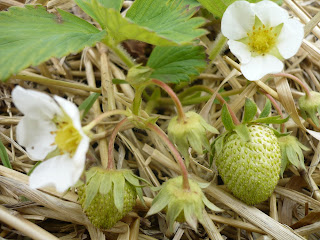

Firstly due to the very strict European laws on what actually constitutes a fertilizer for domestic use I'm not sure how much trouble I can get in for even showing you this. So please keep in mind that this is a blog. It is in no way an instruction manual or "how to" post.
I know it's not pipe bombs but you'd be surprised what a lack of a sense of humour some government departments have when it comes to these things. Who knows what list I'm going to end up on for having Pipe Bomb twice in the same paragraph. Aaah! What the heck. Pipe Bomb. Three times is the charm. Right?
Anyway. You may remember that earlier in the year I got excited about planting some comfrey. This lot comes from a small cutting kindly provided by Aunty Val & Uncle Brian some time ago. The plant was reared in the herb patch for a year before being split up and planted around the darker corners of the plot. This year the comfrey has been growing nicely and is at a usable size.

That's the comfrey. Growing on the right and along the back of the picture. Before the plant starts to flower collect up all the leaves and just leave a couple of stems above ground. It looks harsh but this plant is bullet proof. These are in perfect condition for picking.
There are a couple ofways of treating the leaves. You can add them direct to your soil before planting, you can even add them to your compost. However I favour the big bucket method. Place all the leaves in a bucket and cover with water. 40 litres should do the trick. Cover the bucket and keep it away from
everything with a nose. Really.
That's the bucket in the left corner of the picture. This is as close as I can get to the bucket during the summer.

Six weeks later you should have a brown smelly sludge in the bottom of the bucket. It will smell quite foul but it will be a unique smell not of decaying vegetable matter or decaying flesh for that matter. Sort of like the way horse manure smells bad but you can tolerate it because you know it's not malevolent.
Anyway pour a litre of this muck into a watering can . Add 10 litres of water to it and start watering. It's great for squashes, cabbages, lettuce, roots and herbs. I've not tried it on potatoes or tomatoes or onions and garlic but all would benefit from comfrey in the soil before planting.
Neither have I tried it in the green house or on our fruit bushes as these all have their own feeding and watering routines which I do not want to mess around with.

















